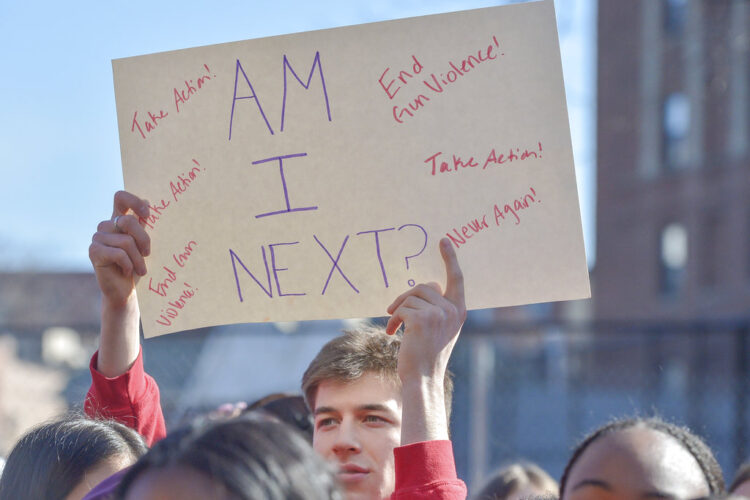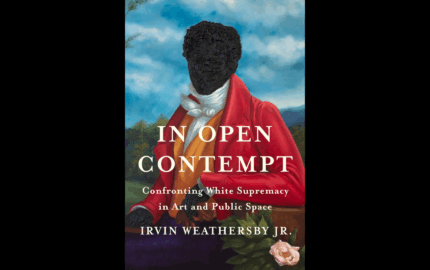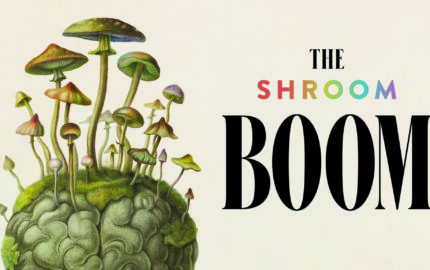By Jacqui Banaszynski
On Wednesday last week, I had a plan for the newsletter: All manner of tidbits were collecting in a file and it was time to use the best of them in an "items" column.
On Thursday morning, I read the Poynter.org morning report, by Tom Jones, featuring his interview with Washington Post exec ed Sally Buzbee, who explained the hows and whys of that day's drop of "Terror on Repeat." A little later, I read another story about the project, this one in Nieman Lab by Sarah Scire. It went even further to describe the decisions the Post made in choosing and designing a package of graphic images of U.S. mass shootings, from the 2012 slaughter at Sandy Hook Elementary School in Connecticut to last year's assault at Robb Elementary School in Uvalde, Texas.
Thursday late afternoon, I was reading another Post piece, considering it for Storyboard treatment, when I came across a link to "Terror on Repeat." I clicked.
And for the next several minutes that seemed like a lot more I tried hard to remember to breathe. When I did, it hurt. Any previous newsletter plans fell away.
"Terror on Repeat" focuses specifically on the devastation from carnage left from the rapid-fire trigger of the popular AR-15 rifle. The subhed gets to the heart of the Post's project: "A rare look at the devastation caused by AR-15 shootings."
I'll leave it to you to decide whether to view the package. I'll also leave it to you, if you prefer, to wind your way there through the maze of being written about it. A quick Google search already pulls up pages and pages of links, with more by the minute. Comments on the Post site are in the thousands.
From me, for now, I'll simply say this: I don't remember ever being as gutted by a piece of journalism. I also don't remember many that I think are more important.
I'm not the queasy type. I've been in more than a few situations, personal and professional, that involved ugliness, destruction and death. Mountain Editor occasionally suggests that I would have made a good ER doc. I'm not afraid to get my hands dirty, and I don't often look away.
But a few days after first reading "Terror on Repeat," I'm still reminding myself to breathe. It does not show actual bodies, except a scattered few on the field after a 2017 assault on an outdoor concert venue in Las Vegas; they are somewhat vague in the distance.
What the package does show, again and again, are the scenes left after the bullets finally stop. They are the horrors witnessed by survivors and first responders. They are the too-real images the press has always edited out of coverage out of sensitivity to those affected and to the public at large.
The Post has ripped a big curtain off that journalistic practice. Or maybe it is more appropriate to say it ripped a bandage off the nasty, festering wound that is gun violence in America. Is that crude? Yes. But not nearly as crude as the realities that have long been masked.
A debate already rages over whether the Post went too far — or whether the press should have gone a lot farther, a lot sooner, in revealing these harsh truths. For those of you who report, write, teach or study journalism, I urge you to set aside that debate long enough to consider how the Post presented the package.
It is a narrative, but not at all a traditional one. A very brief intro sets up a continuing story told in three acts. The chronology is not built on a calendar of 10 years of shootings, but on the sameness of how each plays out: Part 1: Shots Fired. Part II: The Attack Unfolds. Part III: Devastation. Each act is told entirely through images — such awful and honest images — laced between with quotes from survivors, loved ones and responders. The narrative builds through their raw voices, with almost no journalistic intervention.
Yet the journalism is evident and considered. The Post places frequent notes throughout warning what kind of material lies ahead. It makes effective use of digital tools to place ample space between sections and some images, giving readers a chance to pause before deciding whether to go on. It is available online only, with no plans at this point to repackage the piece for print; that provides another buffer between reader/viewer and those images. It lists the dozens — dozens — of reporters, editors and designers who brought the package together. It annotates the sources of information, explains source relationships, honors the wishes of survivors who declined to support the package and acknowledges their opposition, relays why even more parents and survivors wanted the images shown. Even more, why they want them seen.
And it makes top editors available to explain every step of their decision making, and how that led to yesterday's publication.
Is the package a game-changer? Perhaps, in how we evaluate how graphic our journalism should or shoudn't be. That's something we should be doing all the time rather than operating on some thoughtless, rule-bound auto-pilot. The story also might be noted as one of those moments in journalistic design that showed a new way to use the tools we have at hand both creatively and responsibly.
A bigger question is whether it will budge the entrenched defense of absolute gun rights in America. If dozens of dead children can't move our responses beyond "thoughts and prayers," can a piece of journalism?
Only the future will answer that. And the answers will come only if people don't again look away.
On Wednesday last week, I had a plan for the newsletter: All manner of tidbits were collecting in a file and it was time to use the best of them in an "items" column.
On Thursday morning, I read the Poynter.org morning report, by Tom Jones, featuring his interview with Washington Post exec ed Sally Buzbee, who explained the hows and whys of that day's drop of "Terror on Repeat." A little later, I read another story about the project, this one in Nieman Lab by Sarah Scire. It went even further to describe the decisions the Post made in choosing and designing a package of graphic images of U.S. mass shootings, from the 2012 slaughter at Sandy Hook Elementary School in Connecticut to last year's assault at Robb Elementary School in Uvalde, Texas.
Thursday late afternoon, I was reading another Post piece, considering it for Storyboard treatment, when I came across a link to "Terror on Repeat." I clicked.
And for the next several minutes that seemed like a lot more I tried hard to remember to breathe. When I did, it hurt. Any previous newsletter plans fell away.
"Terror on Repeat" focuses specifically on the devastation from carnage left from the rapid-fire trigger of the popular AR-15 rifle. The subhed gets to the heart of the Post's project: "A rare look at the devastation caused by AR-15 shootings."
I'll leave it to you to decide whether to view the package. I'll also leave it to you, if you prefer, to wind your way there through the maze of being written about it. A quick Google search already pulls up pages and pages of links, with more by the minute. Comments on the Post site are in the thousands.
From me, for now, I'll simply say this: I don't remember ever being as gutted by a piece of journalism. I also don't remember many that I think are more important.
Unflinching journalism
I'm not the queasy type. I've been in more than a few situations, personal and professional, that involved ugliness, destruction and death. Mountain Editor occasionally suggests that I would have made a good ER doc. I'm not afraid to get my hands dirty, and I don't often look away.
But a few days after first reading "Terror on Repeat," I'm still reminding myself to breathe. It does not show actual bodies, except a scattered few on the field after a 2017 assault on an outdoor concert venue in Las Vegas; they are somewhat vague in the distance.
What the package does show, again and again, are the scenes left after the bullets finally stop. They are the horrors witnessed by survivors and first responders. They are the too-real images the press has always edited out of coverage out of sensitivity to those affected and to the public at large.
The Post has ripped a big curtain off that journalistic practice. Or maybe it is more appropriate to say it ripped a bandage off the nasty, festering wound that is gun violence in America. Is that crude? Yes. But not nearly as crude as the realities that have long been masked.
A debate already rages over whether the Post went too far — or whether the press should have gone a lot farther, a lot sooner, in revealing these harsh truths. For those of you who report, write, teach or study journalism, I urge you to set aside that debate long enough to consider how the Post presented the package.
Courageous considerations
It is a narrative, but not at all a traditional one. A very brief intro sets up a continuing story told in three acts. The chronology is not built on a calendar of 10 years of shootings, but on the sameness of how each plays out: Part 1: Shots Fired. Part II: The Attack Unfolds. Part III: Devastation. Each act is told entirely through images — such awful and honest images — laced between with quotes from survivors, loved ones and responders. The narrative builds through their raw voices, with almost no journalistic intervention.
Yet the journalism is evident and considered. The Post places frequent notes throughout warning what kind of material lies ahead. It makes effective use of digital tools to place ample space between sections and some images, giving readers a chance to pause before deciding whether to go on. It is available online only, with no plans at this point to repackage the piece for print; that provides another buffer between reader/viewer and those images. It lists the dozens — dozens — of reporters, editors and designers who brought the package together. It annotates the sources of information, explains source relationships, honors the wishes of survivors who declined to support the package and acknowledges their opposition, relays why even more parents and survivors wanted the images shown. Even more, why they want them seen.
And it makes top editors available to explain every step of their decision making, and how that led to yesterday's publication.
Is the package a game-changer? Perhaps, in how we evaluate how graphic our journalism should or shoudn't be. That's something we should be doing all the time rather than operating on some thoughtless, rule-bound auto-pilot. The story also might be noted as one of those moments in journalistic design that showed a new way to use the tools we have at hand both creatively and responsibly.
A bigger question is whether it will budge the entrenched defense of absolute gun rights in America. If dozens of dead children can't move our responses beyond "thoughts and prayers," can a piece of journalism?
Only the future will answer that. And the answers will come only if people don't again look away.



